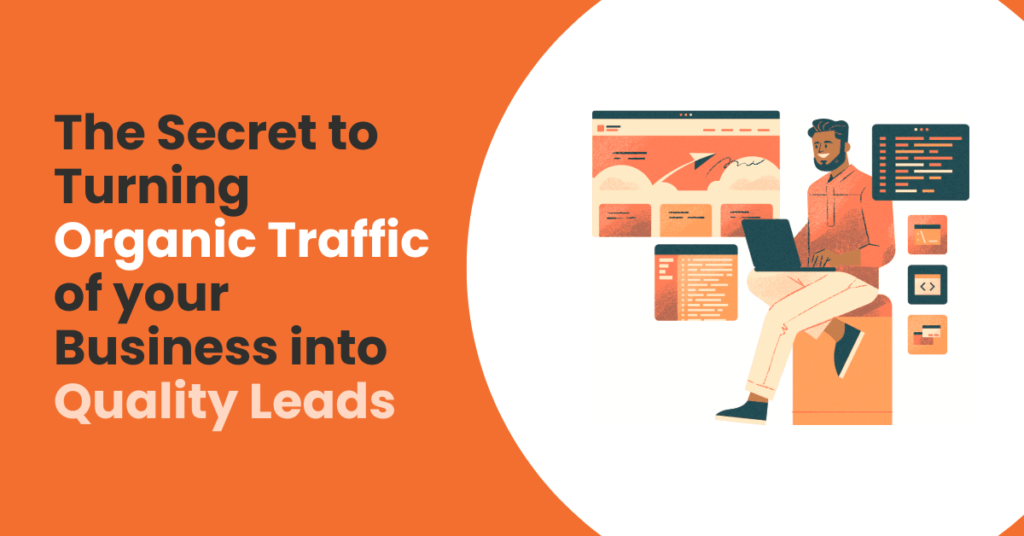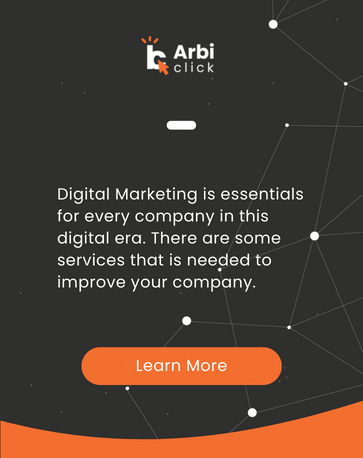The Secret to Turning Organic Traffic into Quality Leads

In the contemporary digital marketplace, organizations face the perpetual challenge of converting website visitors into qualified prospects.
While generating organic traffic represents a significant achievement, the true measure of digital marketing success lies in transforming these visitors into engaged leads who demonstrate genuine interest in your products or services.
The secret to this transformation involves understanding the symbiotic relationship between organic traffic and lead generation, then implementing strategic approaches that guide visitors naturally through your conversion funnel.
This comprehensive guide explores the fundamental principles of organic traffic generation, the psychology behind quality lead conversion, and the proven methodologies that enable businesses to maximize their return on digital marketing investments.

Decoding the Anatomy of High-Intent Visitor Behavior
Organic traffic encompasses visitors who discover your website through natural, unpaid channels rather than through paid advertising campaigns.
These individuals represent the most valuable segment of your audience because they arrive with genuine intent and established trust in your brand’s authority.
The primary sources of organic traffic include search engine results from platforms such as Google, Bing, YouTube, and Quora where users actively search for solutions to their specific problems.
These searches range from broad industry queries to highly specific long-tail keywords that indicate immediate purchase intent or urgent problem-solving needs. Voice search optimization represents a growing segment, particularly among mobile users who utilize conversational search patterns to find local services and solutions.
Social media engagement generates additional organic traffic when users interact with your shared content across platforms including Instagram, Facebook, and LinkedIn.
This category encompasses both direct content sharing and viral content distribution, community discussions within industry-relevant forums, and authentic endorsements from trusted voices in your sector.
Also read: Launch Your Facebook Ads Campaign Without Wasting Budget

Referral traffic occurs when authoritative websites within your industry link to your content, effectively endorsing your expertise through editorial coverage, partner website recommendations, and academic citations that build authority within your field.
Direct traffic represents the pinnacle of brand recognition, occurring when visitors navigate directly to your website based on prior familiarity with your organization, bookmark returns, and word-of-mouth digital referrals that demonstrate established trust and brand loyalty.
The foundation of effective organic traffic generation rests upon establishing credibility and relevance within your target market.
When potential customers discover your business through organic channels, they perceive your brand as a trusted authority rather than an intrusive advertiser, creating optimal conditions for lead conversion.
Also read: SEO Tips for New Websites: Improving SEO Rank Faster

The Pre-Qualified Advantage:
Why Organic Traffic Outperforms Paid Campaigns
Organizations that prioritize organic traffic development gain substantial competitive advantages that extend far beyond immediate cost savings.
The trust factor associated with organic discovery significantly exceeds that of paid advertisements, as consumers inherently understand the difference between purchased placement and earned visibility. This enhanced credibility translates directly into higher conversion rates and more qualified leads.
If you want to dig more about paid ads, you can read this article to learn the power of click marketing as PPC, CPC, and CTR.
Several key advantages distinguish organic traffic from paid alternatives:
- Enhanced credibility and authority positioning within your industry sector
- Cost-effective growth that continues generating results without ongoing advertising expenditure
- Compound ROI effects where individual content pieces attract visitors for months or years
- Higher engagement rates from visitors who actively sought your solutions
- Reduced customer acquisition costs over time as organic presence strengthens
The economic efficiency of organic traffic becomes increasingly apparent over time. Unlike paid advertising campaigns that require continuous financial investment to maintain visibility, organic traffic operates as a sustainable asset that continues generating value without ongoing expenditure.
This characteristic enables organizations to achieve predictable growth while maintaining control over their customer acquisition costs.
The targeting precision inherent in organic traffic represents another crucial advantage. Visitors who discover your business through organic search queries demonstrate active intent and specific needs, making them significantly more likely to engage with your content and progress through your sales funnel.
This pre-qualified nature of organic traffic reduces the resources required for lead nurturing while increasing the probability of conversion.
Also read: Easy 5 Essential SEO Strategies for Ecommerce Marketing Websites

The Mindshift Method: Understanding What Drives Visitor-to-Lead Transformation
Understanding the mindset of organic visitors provides the key to effective lead conversion. These individuals arrive at your website with specific objectives, whether seeking solutions to immediate problems, researching potential vendors, or gathering information to inform future decisions.
Successful lead generation requires aligning your content and conversion opportunities with these visitor intentions.
The conversion process begins with recognizing that organic visitors have already demonstrated trust in your brand by choosing to visit your website from organic search results.
This initial trust creates a foundation upon which you can build deeper engagement through valuable content and strategic calls-to-action.
Critical factors that influence visitor-to-lead transformation include:
- Intent mapping: Aligning content offerings with specific visitor motivations and research stages
- Trust signals: Leveraging social proof, testimonials, and authority indicators to reinforce credibility
- Value proposition clarity: Communicating unique benefits that distinguish your solutions from competitors
- Friction reduction: Minimizing barriers between visitor interest and lead capture actions
- Personalization elements: Customizing experiences based on visitor behavior and referral sources
Timing plays a critical role in organic lead conversion. Visitors who discover your website organically are often in active research phases, making them more receptive to relevant offers and information requests.
The key lies in presenting conversion opportunities that feel natural and valuable rather than intrusive or premature.
Also read: How to Convert Clicks to Customers? Guide to Optimizing Landing Pages

The Lead DNA Blueprint: Identifying and Nurturing High-Value Prospects
Quality leads share several distinguishing characteristics that differentiate them from casual website visitors. These individuals demonstrate genuine interest in your products or services, possess the authority or influence to make purchasing decisions, and operate within your target market parameters.
Understanding these characteristics enables you to design conversion strategies that attract the right prospects while filtering out unqualified inquiries.
Essential components of high-value prospect identification include:
- Decision-making authority: Prospects who have influence or control over purchasing decisions
- Budget alignment: Individuals whose financial capacity matches your pricing structure
- Timeline compatibility: Prospects operating within reasonable implementation timeframes
- Problem-solution fit: Visitors whose challenges directly align with your service offerings
- Engagement indicators: Behavioral signals demonstrating serious consideration and research investment
The lead qualification process should begin during the initial conversion interaction. Rather than simply collecting contact information, effective lead generation forms gather relevant details that help determine prospect quality and appropriate follow-up strategies.
This approach ensures that your sales team focuses their efforts on the most promising opportunities while providing personalized experiences that resonate with each prospect’s specific needs.
Advanced qualification techniques involve progressive profiling, where additional prospect information is gathered across multiple touchpoints rather than overwhelming visitors with lengthy initial forms.
This methodology respects the visitor’s time while building comprehensive prospect profiles that enable more effective sales conversations and higher conversion rates.
Also read: 5 Reasons to Hire Digital Marketing Agency

The Conversion Catalyst Framework: Strategic Approaches to Lead Magnetism
The foundation of successful organic lead conversion lies in creating valuable content that addresses your target audience’s specific challenges and objectives.
This content should demonstrate your expertise while naturally guiding visitors toward conversion opportunities that provide additional value.
Strategic placement of conversion elements throughout your website ensures that visitors encounter relevant opportunities regardless of their entry point or browsing behavior.
These elements should feel integrated into the user experience rather than disruptive, maintaining the trust and engagement that brought visitors to your site originally.
Lead magnets represent one of the most effective tools for converting organic traffic into qualified leads. These valuable resources, such as comprehensive guides, industry reports, or exclusive tools, provide immediate value in exchange for contact information.
The key to successful lead magnets lies in ensuring they directly address the specific needs and interests of your organic traffic sources.
Landing page optimization plays a crucial role in maximizing conversion rates from organic traffic. These pages should maintain consistency with the content and promises that attracted visitors originally while providing clear, compelling reasons to take the desired action.
The messaging should acknowledge the visitor’s organic discovery path while smoothly transitioning them toward conversion.
Also read: 4 Impactful Tips to Kickstart your Digital Marketing Career

Mastering the Art of Marketing:
Your Path Forward to Lead Generation Excellence
The most successful organizations view organic lead generation as a long-term strategic initiative rather than a short-term tactical approach.
This perspective requires consistent investment in content creation, website optimization, and relationship building activities that compound over time to create increasingly valuable results.
Measurement and continuous improvement form essential components of sustainable lead generation success. Organizations must track not only the quantity of leads generated from organic sources but also their quality, conversion rates, and ultimate business value.
This data enables informed decisions about resource allocation and strategy refinement that maximize return on investment.
The integration of organic lead generation with broader marketing and sales strategies ensures optimal results. Rather than operating in isolation, organic lead generation should complement and enhance other customer acquisition channels while providing valuable insights that inform overall business strategy.
Through careful attention to these principles and consistent execution of proven strategies, organizations can unlock the true potential of their organic traffic and build sustainable competitive advantages that drive long-term business growth.
The secret lies not in any single tactic but in the systematic application of these interconnected approaches that transform casual website visitors into engaged prospects and ultimately loyal customers.
Also read: Thriving the Digital Marketing Landscape: Trends and Tactics

